This no-knead gluten-free bread with psyllium husk is soft, moist, flexible, flavorful, and remarkably stable. It is also vegan and very easy to make. My gluten-free bread has never been better! You will need a Dutch oven to make this bread the best it can be.
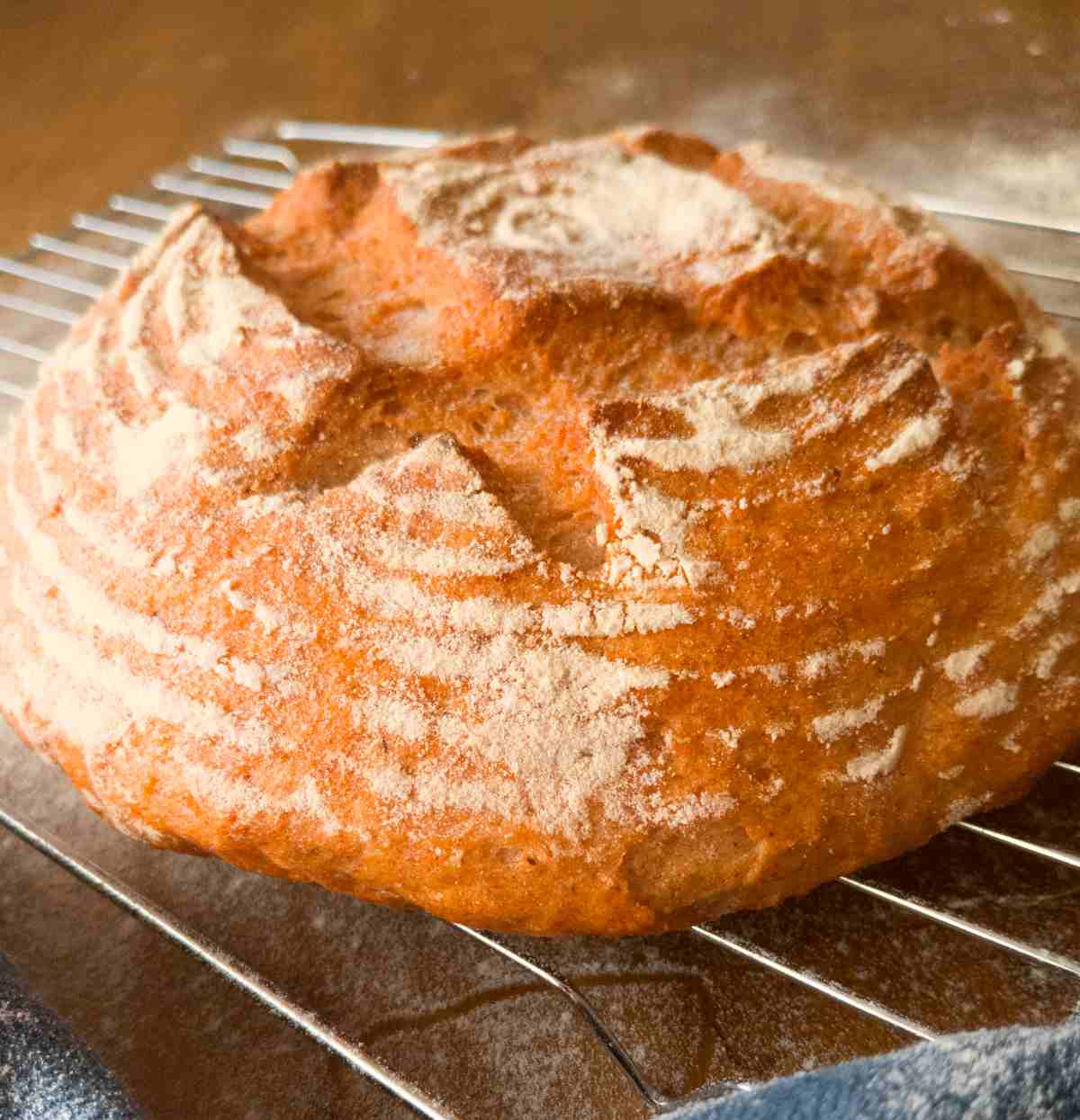
Jump to:
Why You Will Love This Recipe
- Texture. Psyllium husk makes the bread incredibly soft and moist!
- Flavor. The bread is so tasty I keep snacking on it all day long. For even more flavor try it in grilled cheese!
- Easy to make. Gluten-free bread baking advantage is that it is always no-knead!
Whole Husks vs. Powder
I often get asked what is the difference between the two. It is not obvious whether you have psyllium husk powder or whole husks if you are not familiar with the ingredient.
I myself used psyllium powder at first, thinking I am using whole husks and wondered why aren't my recipes turning out! If you have whole husks you can see small particles while with powder it looks like brown flour with no distinct particles.
This recipe calls for whole husks although it is possible to substitute whole husks for the powder. Read my psyllium husk 101 article for more information and illustration.
Ingredients
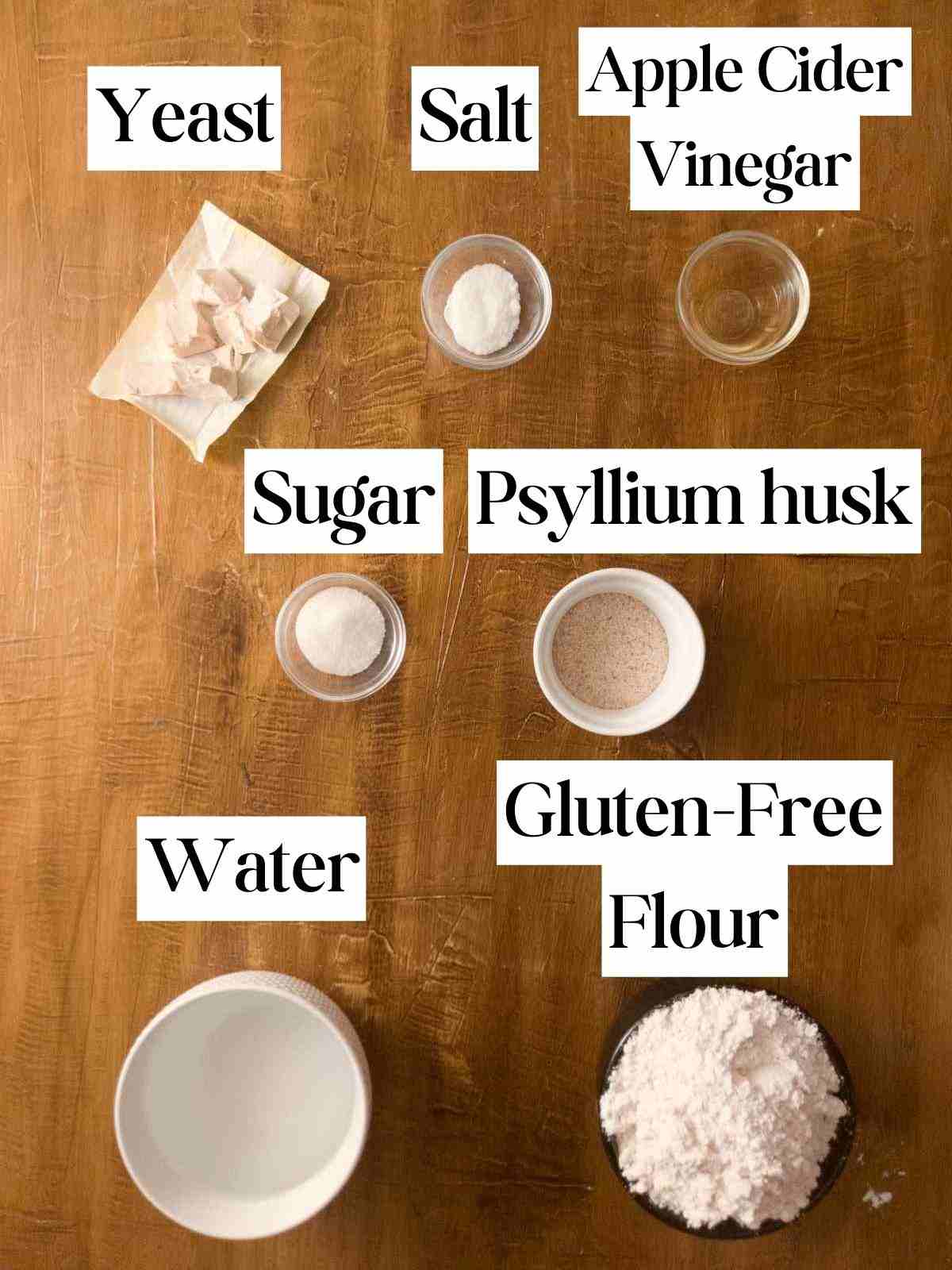
Gluten-free flour - I use my nightshade-free gluten-free flour blend but this bread will work great with any other all-purpose gluten-free flour blend. Just make sure you are using a blend and not a single type of flour. A gluten-free blend should at least contain one type of flour and one type of starch.
Psyllium husk - use whole husks, not psyllium husk powder. Check out this psyllium husk guide if you are new to it!
Yeast - you can use active dry yeast or fresh yeast. I am using fresh yeast because in my experience it is a champion at raising bread!
Apple cider vinegar - it helps yeast thrive!
Water - I used tap water but depending on the quality of your tap water, you might need to use bottled water. If you can drink your tap water then it is safe to use in bread!
Substitutes
Psyllium husk - there is no good substitute for psyllium husk! Xanthan gum will yield crumbly and dense bread, so it is not a good option to use in this recipe.
You can use psyllium husk powder. In that case, use 17g (9.5 tsp) of psyllium husk powder but don't reduce the water. Psyllium husk powder needs to be added to the dry ingredients, for if you soak it, it will clump!
Sugar - you can use honey or maple syrup instead of sugar. Sugar helps yeast thrive and raise the bread!
Yeast - you can use any type of yeast. If using dry yeast, use 8g (2.5-3 tsp). A fun way to substitute yeast is to use wild yeast (sourdough)! Check out my vegan gluten-free sourdough bread recipe if you are up for a challenge!
Starches - if you can't have starches, you can make my starch-free whole-grain millet bread, almond flour bread, buckwheat brown bread, or my 100% rice flour bread instead.
Step-By-Step Instructions
Step 1 - Activate the yeast
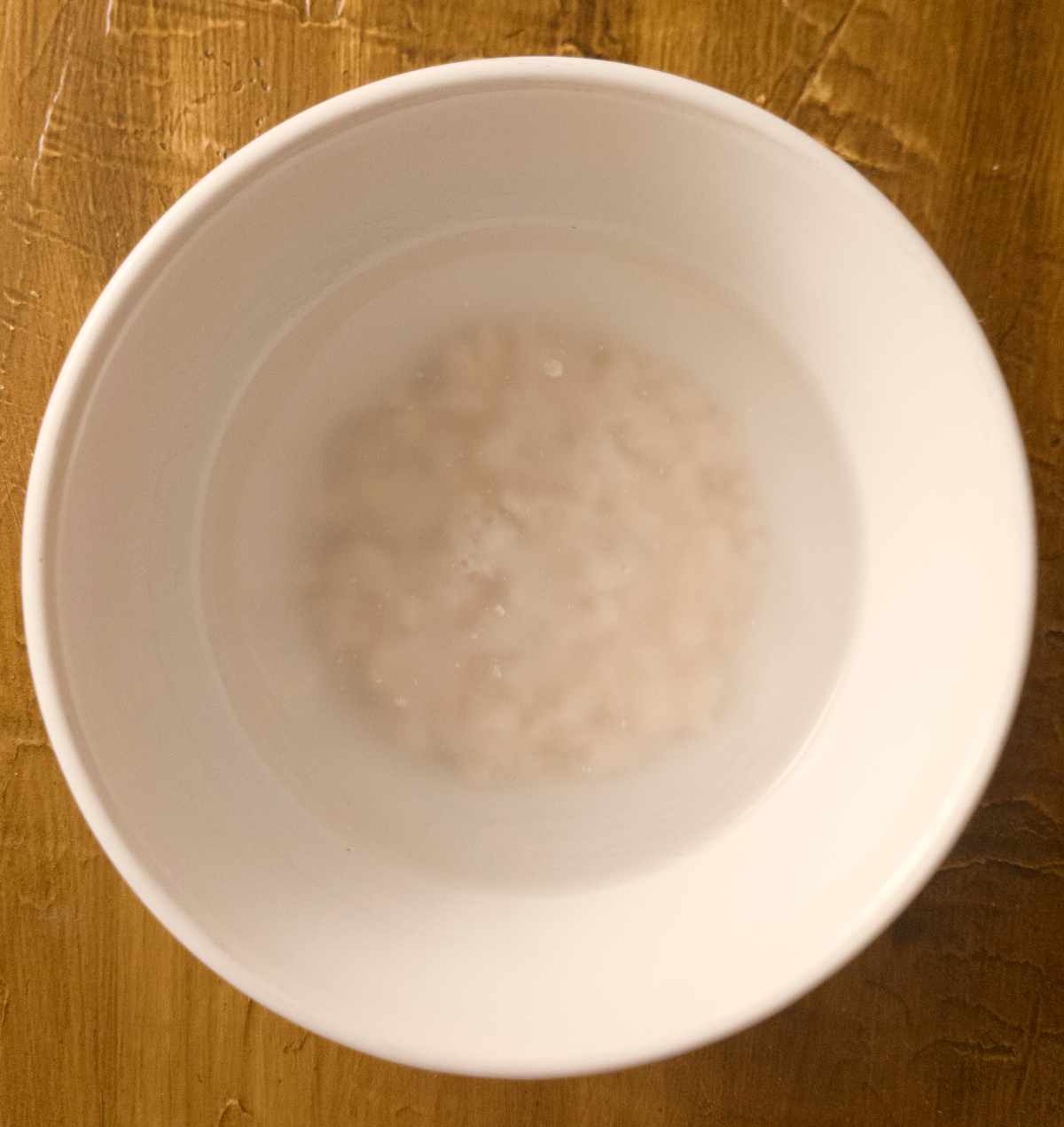
Add the yeast, sugar, and 150ml (⅕ cup + 2 tbsp) of warm water to a small bowl, give it a stir, and set aside.
Step 2 - Make psyllium gel
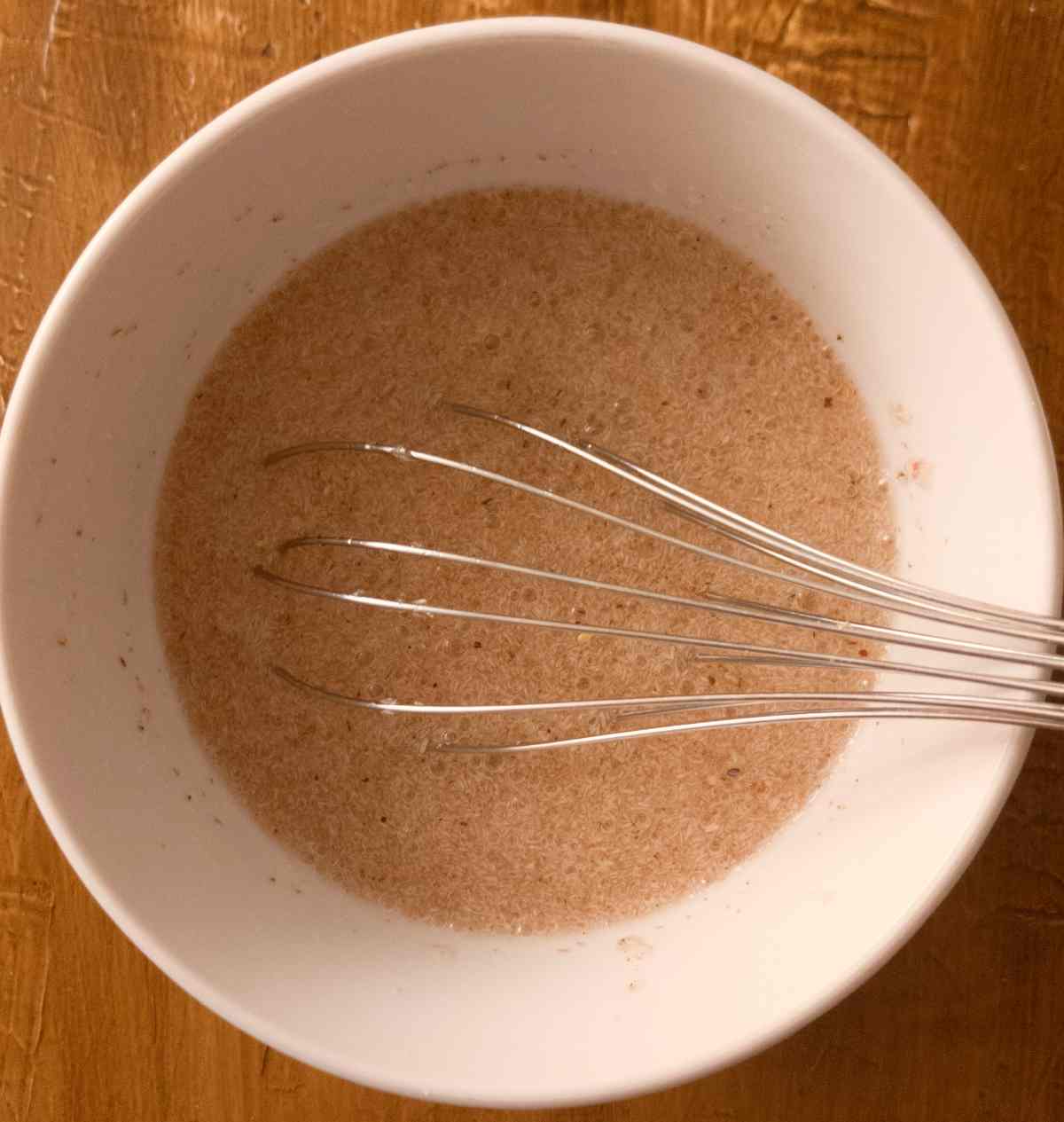
Add psyllium husk to the remaining water and whisk to combine. Let psyllium gel form, it should take amount a minute!
Step 3 - Mix the dough
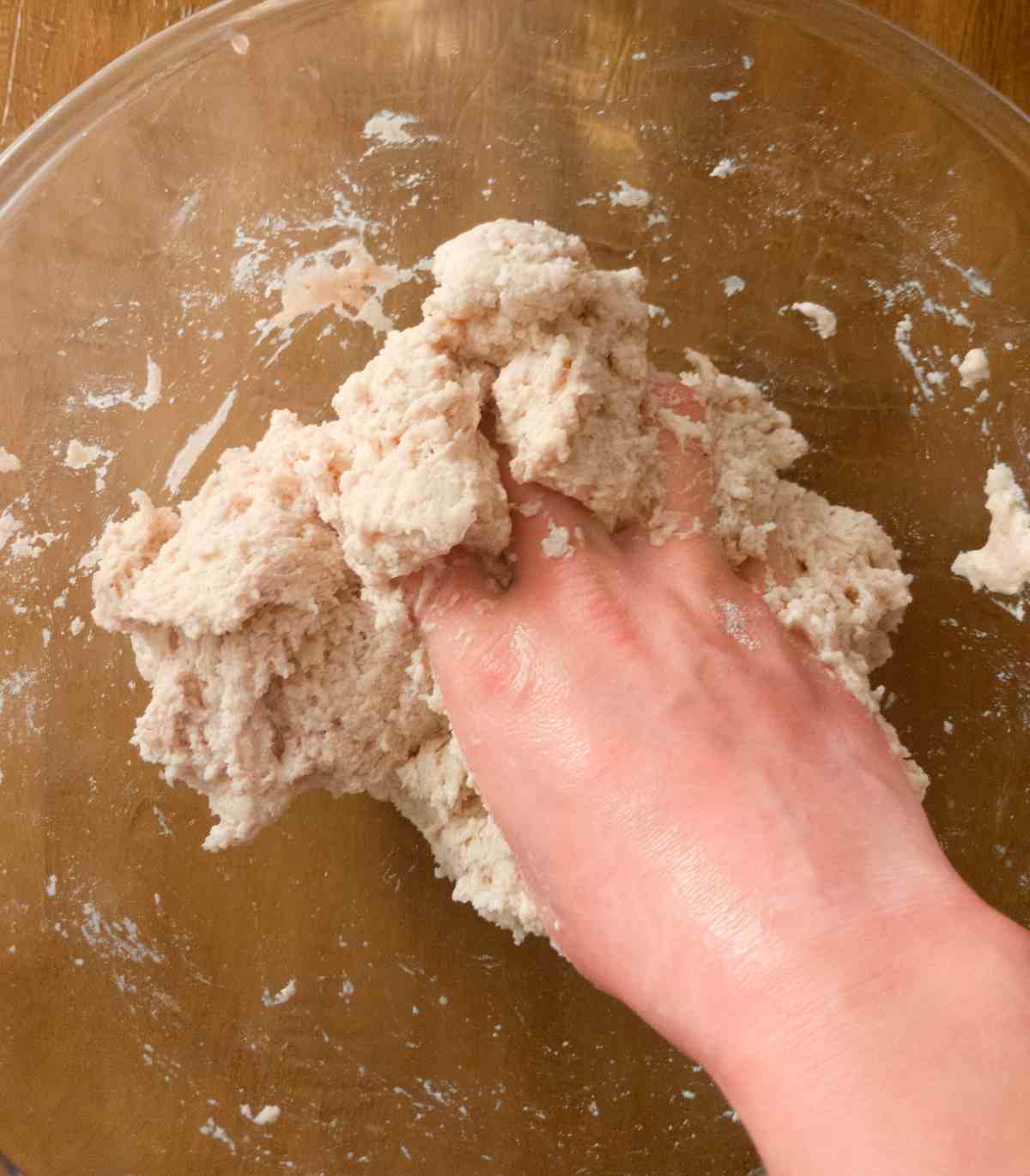
Once psyllium gel has formed, add all the ingredients to a large mixing bowl and bring the dough together by hand. Mix the dough until it comes together and starts coming off from the sides of the bowl to ensure an even distribution of all the ingredients.
Step 4
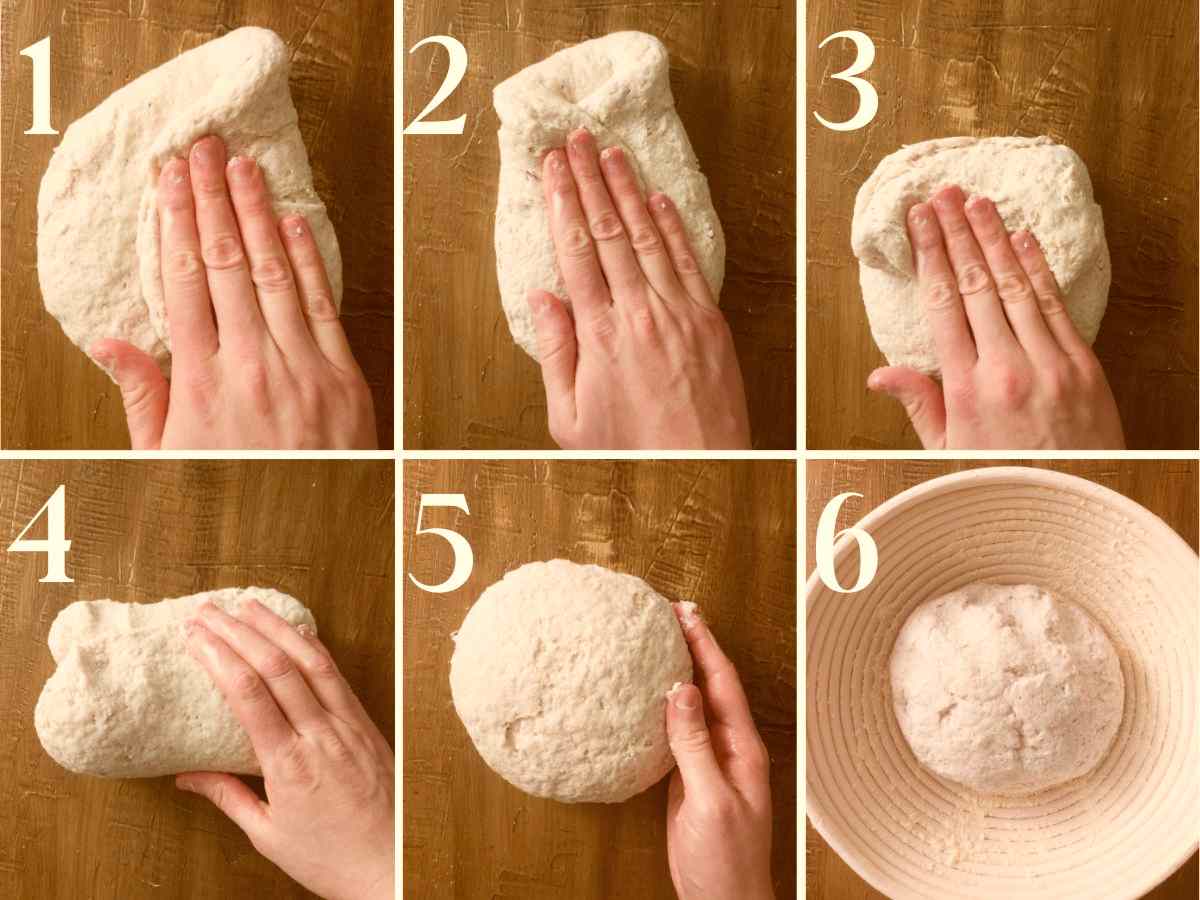
Transfer the dough onto the working surface and grease your hands with oil to prevent sticking. First, flatten it, then fold the right side onto itself.
Now, fold the left side, then take the top and fold it onto the dough as well. Finally, fold the bottom side up. Then, turn the dough around and shape it into a ball.
Place the dough into a floured proofing basket or a mixing bowl lined with a kitchen towel. If you are baking the bread in a bread pan, place it into the greased bread pan.
Leave the dough to rise for about 30 minutes. 10-15 minutes into the rising time start preheating the oven to 450F/230C. If you are baking your bread in a Dutch oven or cast iron skillet, place the dish into the oven for preheating as well. Your dough should not double in size, otherwise, it might deflate during baking.
Step 5 - Bake
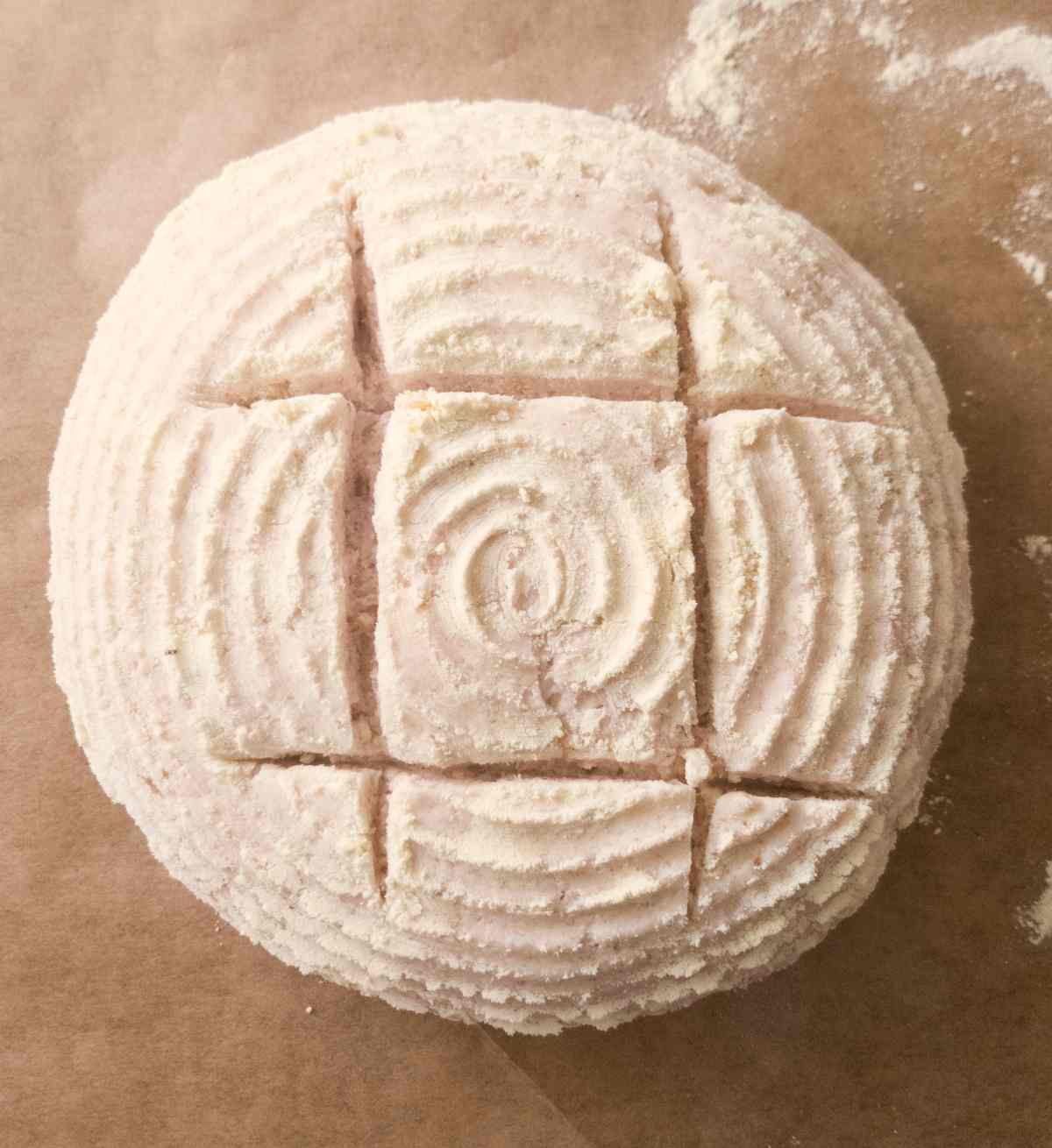
After the rising time is over, turn the dough over onto a piece of parchment paper. Do it carefully to avoid popping the bubbles inside the loaf! Using a razor or a sharp knife score (cut) the surface of the dough (1 inch/2.5 cm) in any pattern you like. By doing that you determine the way through which steam will escape and enlarge the loaf.
Note: if you are baking your bread in a bread pan (not cast iron), don't take the bread out of the pan. You also don't need to score it, either.
Finally, transfer the parchment paper with the bread into the Dutch oven/cast iron skillet. If baking in a skillet, place a large dish with water on the bottom of the oven to create more steam.
If baking in a Dutch oven, drop a few ice cubes in between the parchment paper and the Dutch oven walls for more steam (the cast iron will not rust from ice if it is well seasoned). Then, place the lid on.
First, bake for 30 minutes, then take out the water if using a skillet and transfer the bread onto the oven rack (to prevent burning the bottom). If using a Dutch oven, simply remove the bread from it and place it onto the oven rack.
Turn the heat down to 400F/200C and bake for an additional 20 minutes (or more for darker crust). Let the bread cool down completely before cutting into it to prevent gumminess. Enjoy!
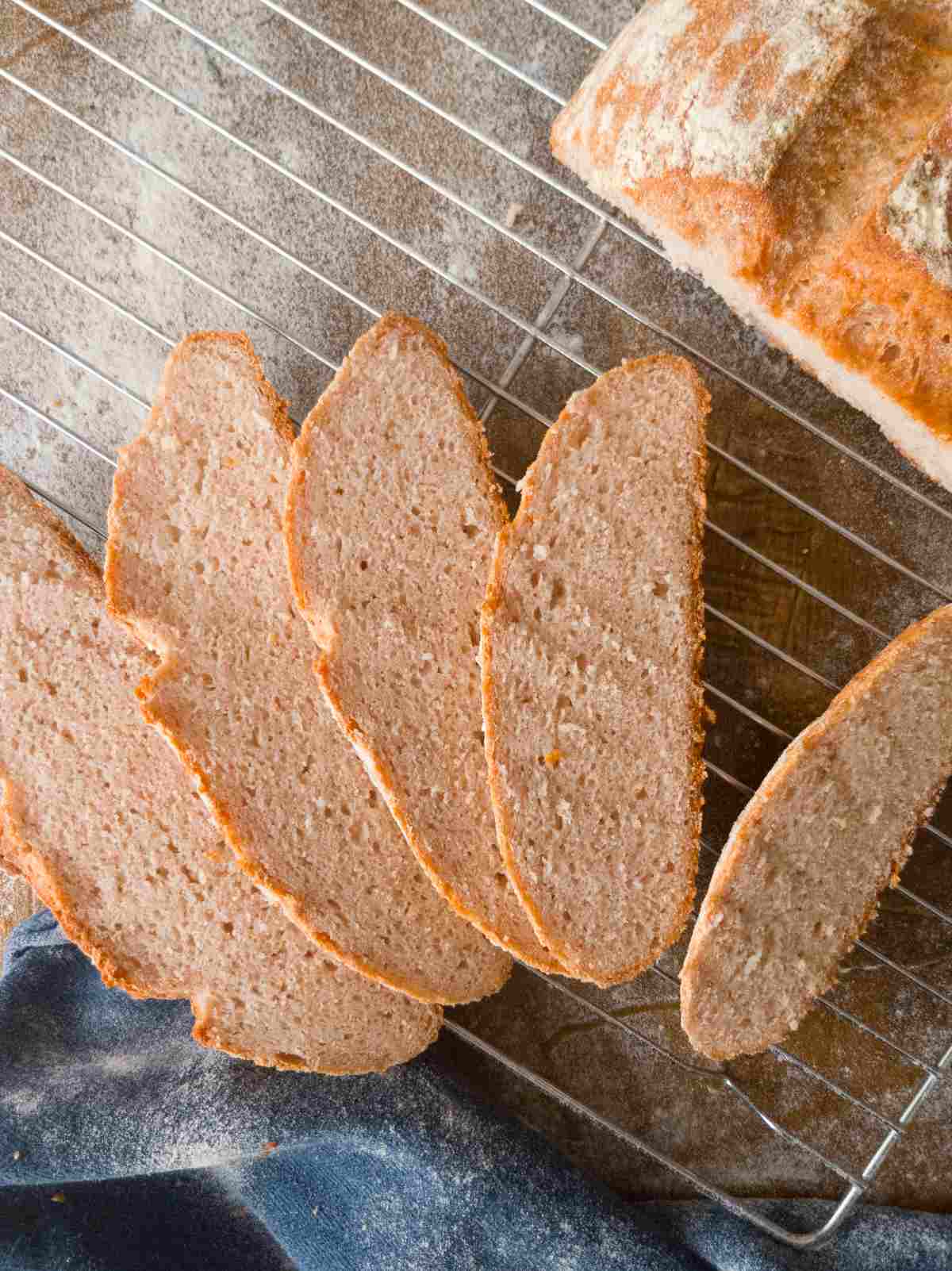
How To Store
Store this bread at room temperature in a bread bag or in the refrigerator. The bread should keep for 3-4 days! You can also freeze this gluten-free bread for up to 3 months. You can slice it first, and then freeze it or freeze the loaf whole.
I prefer freezing sliced bread as it allows me to take out a few slices at a time without defrosting the whole loaf! If you freeze the bread sliced, the pieces will stick together but I am always able to break them apart without damaging them. To avoid sticking you can freeze each slice individually on a piece of parchment paper and then transfer them to a bread bag.
To defrost, simply put the slices into the microwave for 30 seconds. If defrosting a whole loaf, let it thaw at room temperature.
Expert Tips
- Don't use cold or hot water. The yeast will do best with warm or room-temperature water.
- For the best results use a digital scale to measure your ingredients.
- If the dough is sticky when shaping, grease your hands with some oil!
- You can bake the bread in a Dutch oven, cast iron skillet, a bread pan, or any other dish you like. The results will be slightly different based on what you bake in but the bread will be just as soft, moist, and delicious!
- Wait until the bread cools down before slicing it as the crumb is still setting as the bread cools.
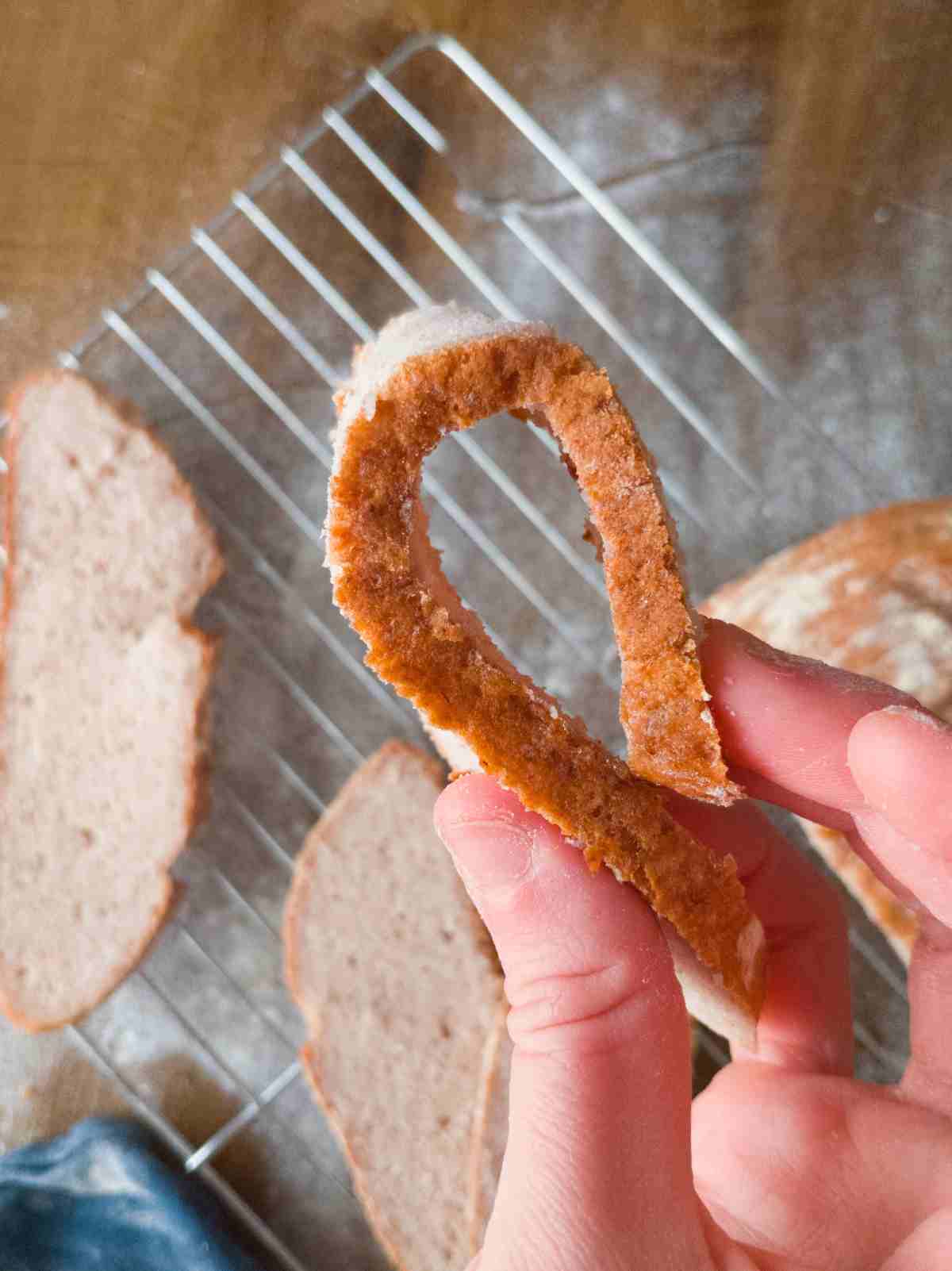
Frequently Asked Questions
I never tried it but I don't think this recipe is good for a bread machine because of the different steps you need to take to bring the dough together.
Yes.
The general rule of thumb is to add 5% of psyllium husk in relation to the amount of flour used in the recipe. So, I use 400g of flour in this recipe, which translates into 20g of psyllium husk.
More gluten-free bread recipes you might like!
This bread goes great with my gluten-free broccoli cheddar soup (Panera copycat)!
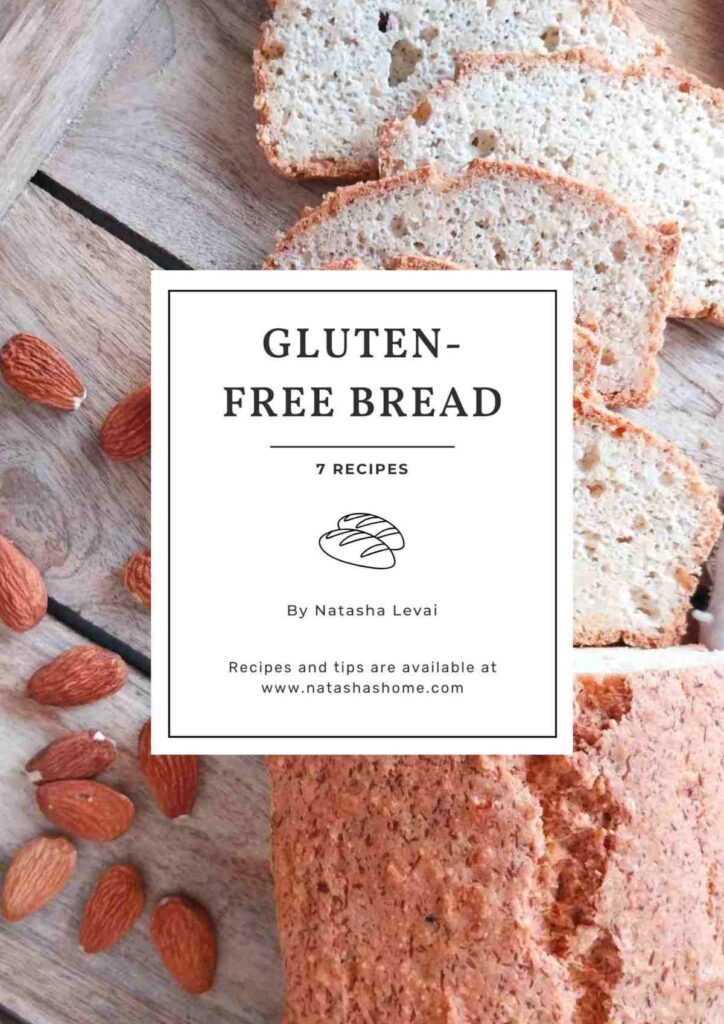
Get my new
Gluten-Free Bread Recipes eBook
The top 7 recipes of 2024!
📖 Recipe
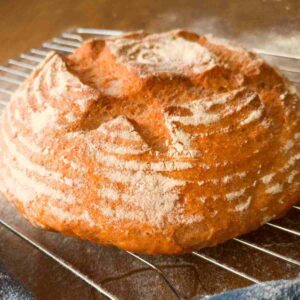
No-Knead Gluten-Free Bread With Psyllium Husk
Equipment
- dutch oven (a cast iron skillet or a regular bread pan will work, too!)
- 2 small bowls
- 1 wisk
- 1 digital scale (strongly recommended)
Ingredients
Flour Blend
- 400 grams gluten-free flour I used my homemade blend which for this recipe would be 100g brown rice flour, 100g white rice flour, 100g tapioca/arrowroot starch, and 100g potato starch/cornstarch, but you can experiemtn with other GF flour blends.
- 12 grams (2 tsp) sea salt
- 20 grams (11.5 tsp) psyllium husk whole husks, 15 grams of coarse powder, read this psyllium husk guide for more info!
- 250 grams (1 cup) water for psyllium gel
- 20 grams (5 tsp) fresh yeast or 8g/2.5 teaspoon active dry yeast
- 150 grams (½ cup+1¾ tbsp) warm water for the yeast
- 20 grams (4¾ tsp) sugar
- 12 grams (2½ tsp) apple cider vinegar
Instructions
- Add the yeast, sugar, and 150ml (⅕ cup + 2 tbsp) of warm water to a small bowl, give it a stir, and set aside.
- Add psyllium husk to the remaining water and whisk to combine. Let psyllium gel form, it should take amount a minute!
- Once psyllium gel has formed, add all the ingredients to a large mixing bowl and bring the dough together by hand. Mix the dough until it comes together and starts coming off from the sides of the bowl to ensure an even distribution of all of the ingredients.
- Transfer the dough onto the working surface and grease your hands with oil to prevent sticking. First, flatten it, then fold the right side onto the center of the dough. Fold the left side onto the center, then take the top side and fold it onto the center as well. Finally, fold the bottom side onto the center of the dough. Then, turn the dough around and shape it into a ball. Place the dough into a floured proofing basket or a mixing bowl lined with a kitchen towel. If you are baking the bread in a bread pan, place it into the greased bread pan.
- Leave the dough to rise for 30 minutes. 10-15 minutes into the rising time start preheating the oven to 450F/230C. If you are baking your bread in a Dutch oven or cast iron skillet, place the dish into the oven for preheating as well. Your dough should not double in size, otherwise it might deflate during baking.
- After the rising time is over, turn the dough over onto a piece of parchment paper. Do it carefully to avoid popping the bubbles inside the loaf! Using a razor or a sharp knife score (cut) the surface of the dough (1 inch/2.5 cm) in any pattern you like. By doing that you determine the way through which steam will escape and enlarge the loaf.Note: if you are baking your bread in a bread pan (not cast iron), don’t take the bread out of the pan. You also don’t need to score it, either.
- Finally, transfer the parchment paper with the bread into the Dutch oven/cast iron skillet. If baking in a skillet, place a large dish with water on the bottom of the oven to create more steam. If baking in a Dutch oven, drop a few ice cubes in between the parchment paper and the Dutch oven walls for more steam (the cast iron will not rust from ice if it is well seasoned). Then, place the lid on.
- First, bake for 40 minutes, then take out the water if using a skillet and transfer the bread onto the oven rack (to prevent burning the bottom). If using a Dutch oven, simply remove the bread from it and place it onto the oven rack.
- Turn the heat down to 400F/200C and bake for additional 20 minutes (or more for darker crust). Let the bread cool down completely before cutting into it to prevent gumminess. Enjoy!

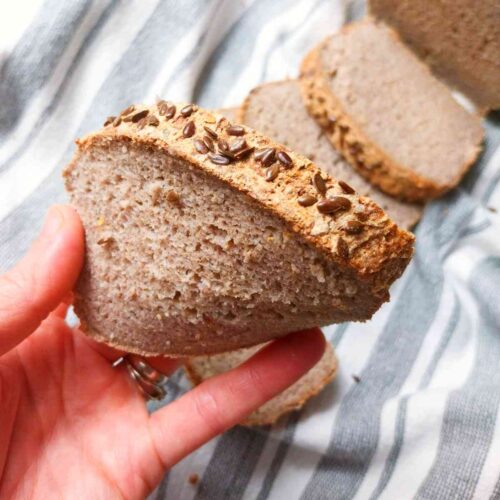
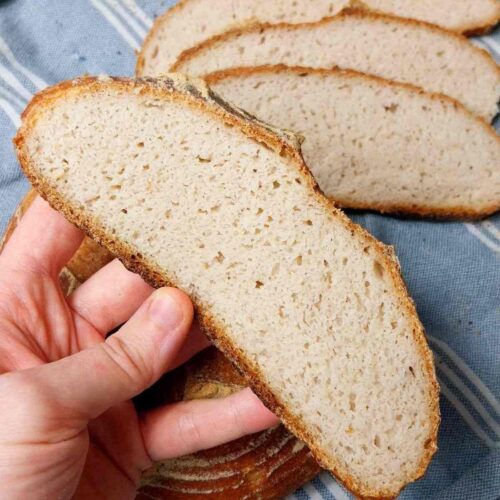
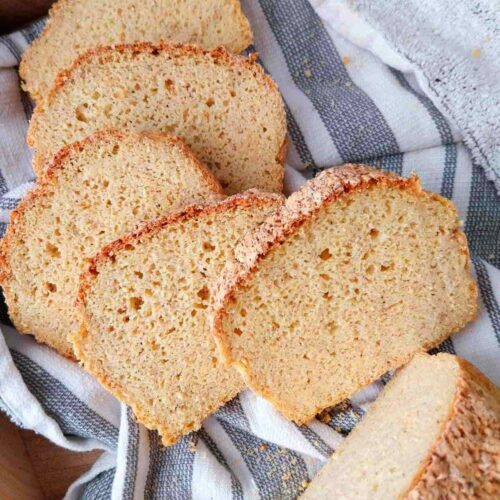
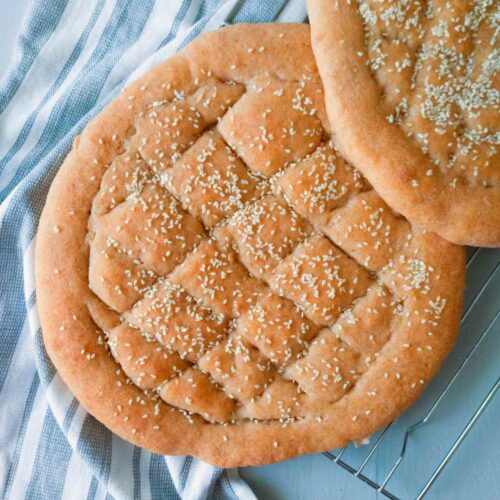
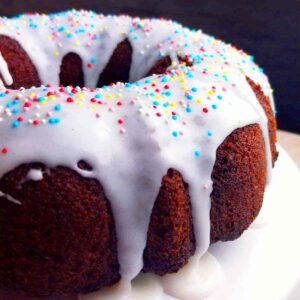
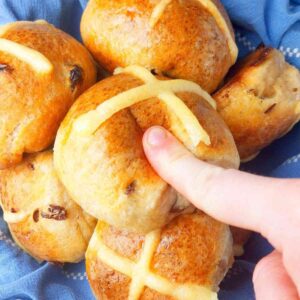
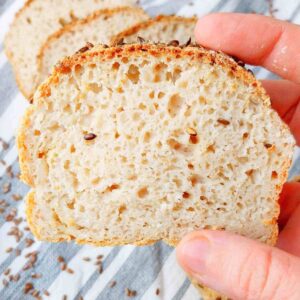
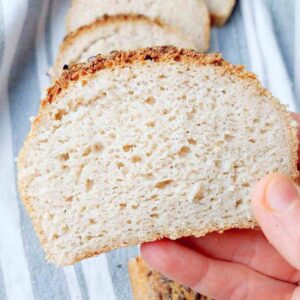
Natashashome
Hi Carolyn! Those comments were related to another bread recipe I had on this page before. I removed them to prevent confusion! 🙂 The post itself has the correct information.
Barbara Ernst
What is your flour combo? I’m allergic to wheat, rice and almond. Thanks
Natashashome
I use rice flour in my blend but you can use rice-free gluten-free flour. For example, use 140g of millet flour, 140g of sorghum flour, and 120g of any starch of choice (you can use 30g of tapioca starch and 90g of cornstarch, for example).
Natashashome
Hi Lori! I had a different bread recipe here before and that comment did not get removed when the recipe was updated! No, no eggs in this bread. 🙂
Linda
My bread didn’t seem cooked. Very doughy. Cooked it an additional 15 minutes and still doughy. Any suggestions?? I was so hoping this was the recipe I was looking for.
Natashashome
Oh no!! I would love to help you! What flour did you use? Did your bread rise? How long did you leave it out for rising? What temperature did you bake it at?
Amanda
Hi! If I am to use gluten free sourdough starter, how many grams would I add in for this bread recipe? Do I need to adjust anything else?
Thanks! Your site has been super helpful to me 🙂
Natasha Levai
Hi Amanda! To make a GF sourdough bread I would recommend following a specifically designed recipe like this one https://www.natashashome.com/gluten-free-sourdough-bread/ !
Emily
i’ve made this bread twice now and it’s so simple and delicious!!!
Natasha Levai
Thank you so much for your feedback, Emily!
Sophia
What brand of psyllium husk do you use? The one I tried in another recipe turned my bread purple. It was a psyllium husk powder so not sure it there is a difference in color between the whole husks and the powder?
Natasha Levai
Hi Sophia! I buy psyllium husk locally online and I live in Europe so I don't think you can get the same kind but generally, yes, powder might turn your bread purple while whole husks should not. You can also buy "blond" psyllium husk if you find it. Here is a post I have on psyllium husk in gluten free baking with an amazon link to buy it. 🙂
Sidra
Can I use this recipe in my bread machine (with gluten free setting)?
Natasha Levai
Hi Sidra! I have never tried it in a bread machine but I think it could work! Let me know if it does! 🙂
Mona
This bread requires only one proofing right ?
I’m about to make it now and was wondering if a second proof is needed before baking. That’s what I do with my regular breads.
Natasha Levai
Hi Mona! You are right, this bread only requires one proofing. With gluten-free breads you don't need to do two stages of proofing!
Natasha Levai
Hi Bon! Before, this recipe used to have 400g of flour and recently I updated it to be 500g because with some blends the dough was too wet to hold its shape. So, at this point you would want to add 50g additional flour and 50g additional starch!
Sarah
I just baked this recipe using 500g like you stated in the above comment and my dough was very stiff and didn’t rise at all?!
The recipe initially stated 400g, so I’m confused as to what measurements I’m to use.
Natasha Levai
It is 400g just like the recipe says! The comment above is outdated and I will remove it.
Pat
I just made this bread . It didn't rise well, but that is always my challenge with every bread. I added some shredded cheddar on top and it was delicious and SO soft inside- the 1st time I have used the psyllium husks. What a great addition. Do you have any other GF bread recipes with it? Anyway.. I just looked at my printed recipe - I think it's a few months old. But it says 500 gms of GF flour, which is what I did. The current recipe on your site says 400 gms. of flour. How did that happen? I assume it should be 400 not 500? Was that my problem? All other ingredients, notes, instructions on my print out are the same. I'm about to make it again, and will do 40 gms. Thanks for the recipe.
Natasha Levai
Hi Pat! Yes, I changed the recipe to 400 grams. I was tweaking it and realized that depending on what flour you use the results will be different. So, I specified the exact flour types and limited the volume to 400g to ensure stable results!
Pat
Awesome! Thank you.
Charlie
Hi hi. I think you have a typo. The first time I made it I made it according to the typo, and hooboy was it purple and springy. Still had really good flavor though. Anyhow, the typo:
In the ingredients section at the bottom, you have this.
20 grams (11.5 tsp) psyllium husk. Since I use tsp/tbsp measurements, I put 11.5 tsp in. Even at the time this seemed excessive, but I did it! It should read (4tsp)
Anyhow, awesome stuff you have here. Excellent!
Natasha Levai
Thank you!! I actually took the tsp measurements from another source as I myself only use a scale. Thank you for pointing this out! I will go in and fix it.
Paula Taylor
I have tried so many gluten free bread recipes only to end up with solid bricks or some inedible gluey substance. But this bread is actually good, even if you aren't gluten-free. It is easy to make and you can mix in different flours for different tastes.
melody
What purpose does the yeast serve in this recipe? Without gluten, the yeast has nothing to work with. Could those of us who cannot have yeast leave it out?
Natasha Levai
Hi Melody! Yeast feeds on carbohydrates, not on gluten, so it will still work well with a gluten-free flour blend. If you take out the yeast from the recipe, your bread will be a gummy brick, so I wouldn't recommend that! If you are intolerant to yeast, you can try making a gluten-free sourdough bread!
Michelle Vest
I have great difficulty finding a receipt to meet all of my needs as far as my ingredients except this one. I found a few things very confusing in this recipe and hoping you could clarify so I can use this recipe. I do not see a full explanation of how to use thethe vinegar. Also the measurements of the water to use for the yeast do not match the main ingredients versus the instructions. I only have powdered psyllium husk that I am planning to use and I also do not understand where you say to add the powder to the dry ingredients but still use all the water? When do I use it? Thank you!
Natasha Levai
Hi Michelle! Thank you for your note, I will need to go in and edit the text. Vinegar is for the yeast to feed on, so you can add it at any point in the recipe. Follow the ingredient list in the recipe card, that is the most correct one, and if there are differences, I will go in and edit those as well! With psyllium husk powder, you can try using it, but in my experience it creates a much wetter dough that doesn't shape as well as the one created with whole husks.
If you use powder, you will need to add it to the dry ingredients and still use all the water, because psyllium powder will eventually absorb that water!
Liz
One of the best gluten free breads I have come across. Had to make some changes to the recipe as the gf flour mix I used required more water. I also added a whole egg. Cooking the bread in a cast iron skillet made the crust delicious. I will definitely make it again. Thanks for the recipe.
Mandi
Is it possible to use 200g brown rice, 100 tapioca and 100g cornstarch? I’m new to GF baking, so many types of flours
Natasha Levai
Yes!
Corina
This bread is so delicious! I am on an avid bread baker, and I'm on an allergy elimination diet so off gluten for a few months. This bread is so yummy that I will probably still bake it sometimes even if it turns out I'm not sensitive to gluten. The crust is so crunchy, and the inside is sooooo soft and drool worthy. I wish I could buy this in the store!!
I always forget to make ice cubes, so I just dump a little water (1/4 cup?) into the hot Dutch oven between the parchment and the pan, and that has worked great with no issues. Oh, and I am also off corn and nightshades, so I replace the potato/corn starch with more tapioca starch. Thank you so much, Natasha!
Nancy Kirsch
Can I use regular all-purpose white flour for this recipe? I am not gluten-free but have lots of psyllium fiber husks to bake bread with!
Thank you
Nancy
Natasha Levai
Hi Nancy! I have never tried this recipe with regular flour! I think it is better to go with a regular bread recipe and add psyllium husk to it than using this recipe with wheat flour.
Margret
Really like this Bread. It’s easy to make, it’s quick to make and it tastes good!
Jane
This is a great recipe to work off of. I got a cast iron pullman loaf shaped dutch oven and in a week we've already baked and eaten two loaves.
To fill the 7 quart dutch oven, I doubled this recipe.
I pre-heated it and rose the bread in the dutch oven as well, as I'm in a northern cold/dry environment.
I used psyllium husk powder as thats what I can find in my area and made with the water to gel ahead of mixing. To get around the clumping, I mixed it with an immersion blender before adding. It worked great!
The flour mix I'm using for this is my egg/nightshade/gluten free flour mix:
3 parts brown rice flour
3 parts corn starch
2 parts otto's cassava flour
2 parts white rice flour
2 parts sweet potato starch (from my asian grocery)